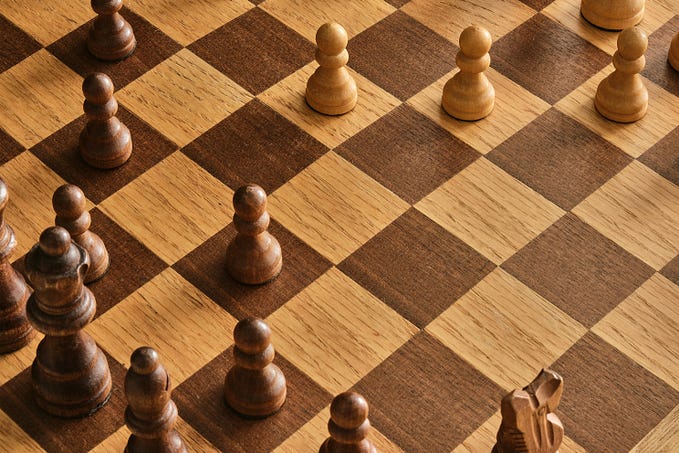Beginner’s Guide to Prompt Engineering

Introduction
In the exciting world of AI and language models, prompt engineering plays a crucial role in harnessing the power of these models effectively. If you’re an engineer who wants to understand what prompt engineering is all about and how it is used, this comprehensive guide is for you. We’ll start with the basics, exploring the concept of prompts, and then dive into real-world examples to showcase the impact of prompt engineering.
Understanding Prompts
In the context of AI and language models, a prompt refers to a specific set of instructions or input provided to the model, which guides it to generate desired responses or outputs. Think of prompts as the questions or cues you give to an AI model to elicit the information or response you need. With carefully crafted prompts, engineers can steer the model’s behavior and influence the quality of its generated content.
Example:
Let’s consider an example to illustrate how prompts work. Imagine you have a Large Language Model (LLM), which is a powerful generative AI model capable of creating human-like text. You want to use this LLM to generate a creative story about a pirate adventure. Here’s a sample prompt you could provide to the LLM:
Prompt: "Write a captivating story about a brave pirate captain and their quest to find a legendary treasure hidden deep within a treacherous island. Be sure to include suspense, action, and unexpected twists in the narrative."By feeding this prompt to the LLM, the model uses its language modeling capabilities to generate a unique and engaging story that aligns with the given instructions.
Output:
The LLM might produce an output like this:
Output: "Captain Morgan, a fearless pirate known for his wit and cunning, stood at the helm of his ship, The Black Pearl, as it sailed through the treacherous waters of the Caribbean. The crew eagerly followed their captain as they approached an uncharted island rumored to house a legendary treasure. Little did they know that this adventure would push them to their limits, testing their loyalty and courage. As they ventured deeper into the heart of the island, facing mythical creatures and solving cryptic puzzles, Captain Morgan's leadership skills were put to the ultimate test. Just when it seemed all hope was lost, they discovered a hidden chamber that held the long-lost treasure, sparking joy and celebration among the crew. But their triumph was short-lived as a rival pirate crew emerged, ready to steal their newfound riches. What followed was an epic battle for survival, with sword-clashing action, heart-pounding chase sequences, and daring escapes. The story concludes with a surprising twist, revealing the true identity of the legendary pirate who hid the treasure and vowing to set sail on future adventures, forever etching their names in the annals of pirate history."This example demonstrates how a well-crafted prompt can guide the LLM to generate a captivating story that adheres to the given instructions. Prompt engineering empowers you to shape the output of AI models to suit your specific needs.
Importance and Applications of Prompt Engineering
Prompt engineering plays a vital role in various applications powered by language models and AI, including natural language generation, content creation, interactive chatbots, semantic search, and text summarization. Let’s explore these applications in more detail:
1. Natural Language Generation:
Prompt engineering is widely used to generate high-quality, context-aware text outputs. From creative writing samples to product descriptions and chatbot responses, prompt engineering helps refine AI-generated content to meet specific objectives. By carefully designing prompts, you can influence the tone, style, and relevance of the generated text.
2. Content Generation:
Creatives and content creators often rely on prompt engineering to enhance their productivity. By leveraging AI models, they can collaborate to produce compelling content, such as articles, artwork, and music. For example, an artist can provide a prompt to an AI model to generate initial drafts of a painting, which they can then refine and build upon.
3. Interactive Chatbots:
Prompt engineering is instrumental in developing chatbots capable of engaging in meaningful conversations. By crafting prompts that encourage specific responses, engineers can make chatbots more interactive and dynamic. For instance, a prompt can instruct a chatbot to respond with empathy or humor, creating a personalized user experience.
4. Semantic Search and Text Summarization:
Prompt engineering techniques are employed to improve search relevance and extract key information from large volumes of text. By shaping the prompts, developers can guide the AI model to provide more accurate search results or concise summaries. For example, a prompt can specify the desired format or summarize a complex research paper into a succinct summary.
Challenges in Prompt Engineering
While prompt engineering is an exciting and powerful technique, it also comes with its fair share of challenges. Let’s explore some of the common challenges faced by prompt engineers:
1. Crafting Effective Prompts:
Writing clear and specific instructions for AI models can be challenging. Ambiguity or open-ended prompts may lead to unintended or undesirable responses. Prompt engineers must iterate and refine prompts to achieve the desired results. They need to consider factors such as context, desired tone, and potential biases to craft prompts that align with their objectives.
2. Handling Edge Cases:
Prompt engineers need to consider and address edge cases that may result in inappropriate or harmful content. They must have a deep understanding of both the AI model and potential risks associated with specific prompts. This requires constant monitoring and adaptation to ensure the AI-generated outputs are safe and aligned with ethical considerations.
3. Scalability:
Developing prompts that work well across various use cases, industries, and applications can be challenging. Engineers need to create prompts that are adaptable to different contexts while maintaining their effectiveness. This requires a thorough understanding of the specific domain and the ability to generalize prompts for various scenarios.
4. Balancing User Control and AI Assistance:
Prompt engineers must find the right balance between giving users control over AI-generated content and providing helpful AI-generated suggestions. Striking this balance is crucial for a positive user experience. While users may want AI assistance, they should also be able to influence and shape the output according to their preferences.
As you continue your journey in the world of AI and language models, remember that prompt engineering is a dynamic and evolving field. By refining your prompt engineering skills and staying up-to-date with the latest advancements and best practices, you can unlock the full potential of AI models and create impactful applications.
For learning how to write better and effective prompts refer : https://towardsdatascience.com/prompt-engineering-guide-for-data-analysts-54f480ba4d98
https://platform.openai.com/docs/guides/gpt-best-practices/six-strategies-for-getting-better-results
sources:
https://huyenchip.com/2023/04/11/llm-engineering.html#prompt_engineering_challenges
https://www.linkedin.com/pulse/20-prompt-engineering-paint-points-todd-kelsey-phd/





